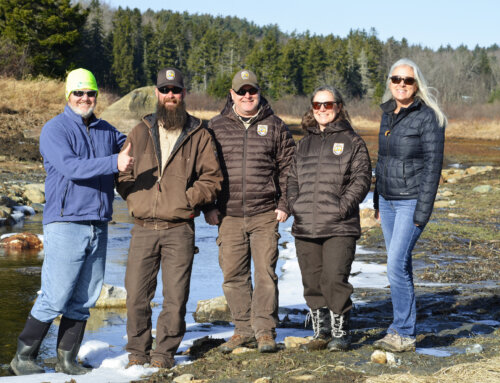Vermont, July 25, 2014. It was a laid-back fishing afternoon that would end at a pool that could produce several nice fish; maybe even ones of different species, small mouth bass, rock bass even rainbow trout. The pool was reliable because it took a wee walk in the woods to get to it but that was OK, in fact it was better than OK.
As with most of the tributaries to the Connecticut River, this stream was not large and neither was the pool, 3-4 feet deep, 10 to 15 feet wide stretching in length 40 feet. Based on previous experience, there could be more than one fish in the pool but if you were lucky enough to hook a fish then every other fish in the pool knew about it and headed for their hidie hole until they felt safe. You could do nothing but wait after taking and releasing a fish in this or any pool and for good reason.
Fish have a well developed sensory gland that tells them immediately when there is panic in the water. The source of this warning is in the lateral lines located mid-way down and along the length of both sides of their body. On many species, it is a noticeable darker color. In other species it is less obvious but it is there nonetheless. The line is not just a matter of coloration but a sensory organ that detects movement of and vibrations in the water.
The lateral line is the location of essentially hair cells, which sense motion, movement and send signals to the fish’s brain. Along the lateral line are tiny fluid filled tubes that lead under the scales and skin, each with a bundle of hair cells at its base. Just as we can feel wind on our body because of our hair cells; fish feel vibrations and water flow through the lateral line openings. Along with telling the fish the speed, direction and turbulence of the flow of water around them, the cells pick up disturbances in the water whether it is from prey pushing the water while attempting to escape or from the panicked splashing of another fish in trouble.
After releasing a fish in a pool, a patient fisher finds a comfortable spot to sit while waiting for the pool to recuperate and fish to begin feeding again. While hanging out, all kinds of interesting things happen. In this case, the chipmunk provided the entertainment during the wait when it scurried into sight about 30 feet away then sat on the shore.
Chipmunks are the smallest member of the squirrel family. There are twenty five species of chipmunks with twenty four of them found in different areas of North America from Canada to Mexico. The one species not found here is the Siberian chipmunk whose range as one might expect is the Asian continent. The taxonomic name for our eastern chipmunks is Tamias Eutamias in Greek meaning treasurer, denoting their storing their food in burrows.
The question about this one was why was it sitting on the shore? The little guy quickly answered the question when it moved smoothly into the water and began swimming the 15 feet to the other side of the pool. That was a learning experience, it had never occurred even once to think whether chipmunks could swim. Chipmunks can swim, really but their dog paddle stroke does splash some and they are not fast swimmers. Off it went, straight across the pool and it seemed at easy in the water.
With the chipmunk about 2/3 of the way across the pool, the next surprise came in a swirling instant. A large fish rose and struck the chipmunk causing a whopping splash on the surface of the water and gulp the chipmunk disappeared, pulled under the water by the fish. The first thought was, wow, this is an unexpected experience squared, chipmunks do swim and bass eat them. The next thought was how to catch that fish, although you had to wonder if the fish would be hungry after such a filling meal.
Even after an experience like this, it still takes a minute or two to bestir oneself off the ground and walk downstream, marking the possible location of that fish by eyeing where the chipmunk disappeared. Once in place but before starting to cast, the chipmunk bobbed to the surface, its wet hair looking a tad scraggly but otherwise it seemed none the worse for its experience. It finished its swim, scampered up the far shore, shook itself like a dog, and disappeared into the woods, going who knows where, never to be seen again and despite determined casting over the spot of the attack on the chipmunk, neither was the fish.
CRC urges you to go play in our watershed. It is always fun and sometimes there are amusing surprises waiting for you.
David Deen is River Steward for the Connecticut River Watershed Council. CRC has been a protector of the Connecticut River for over 60 years.







